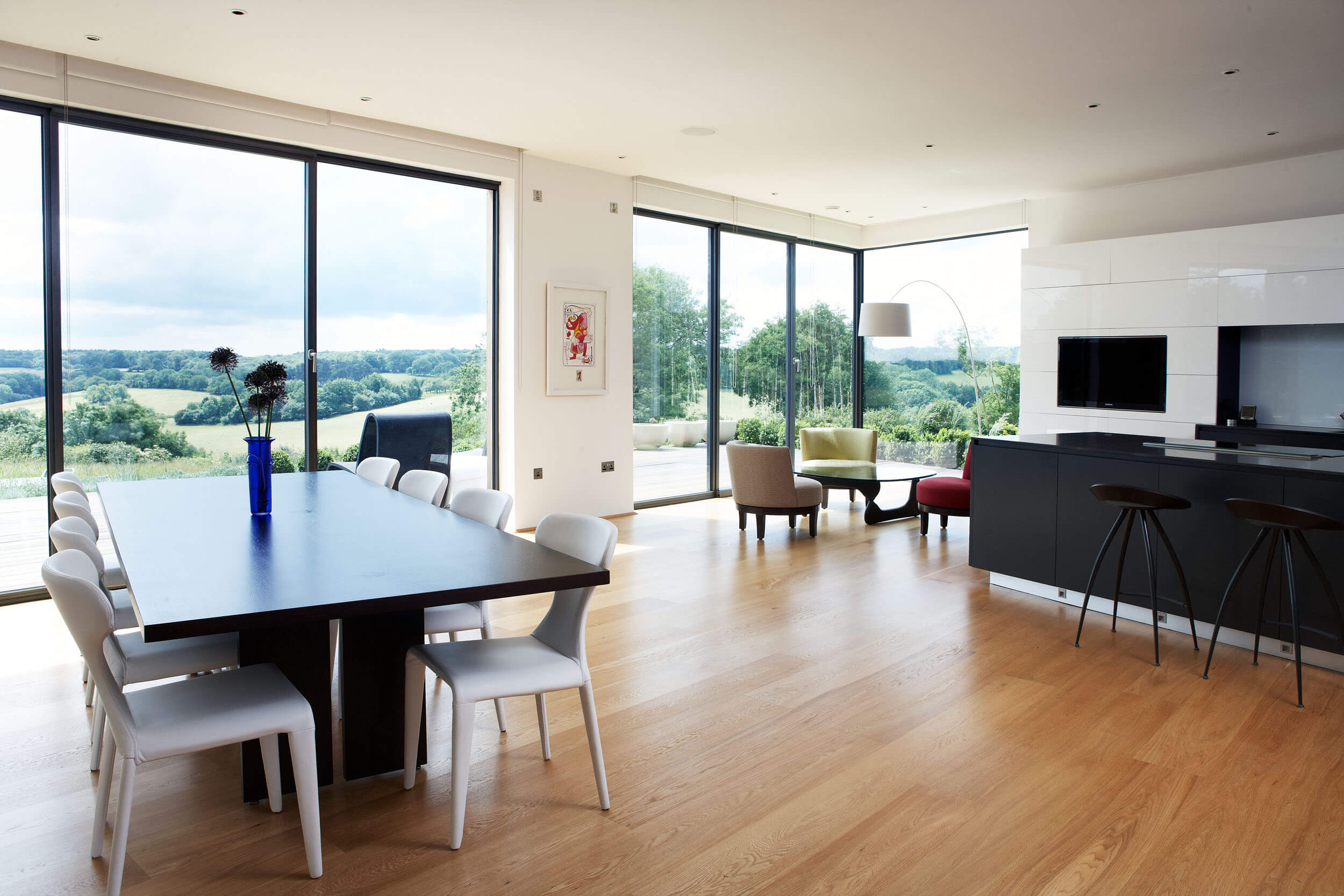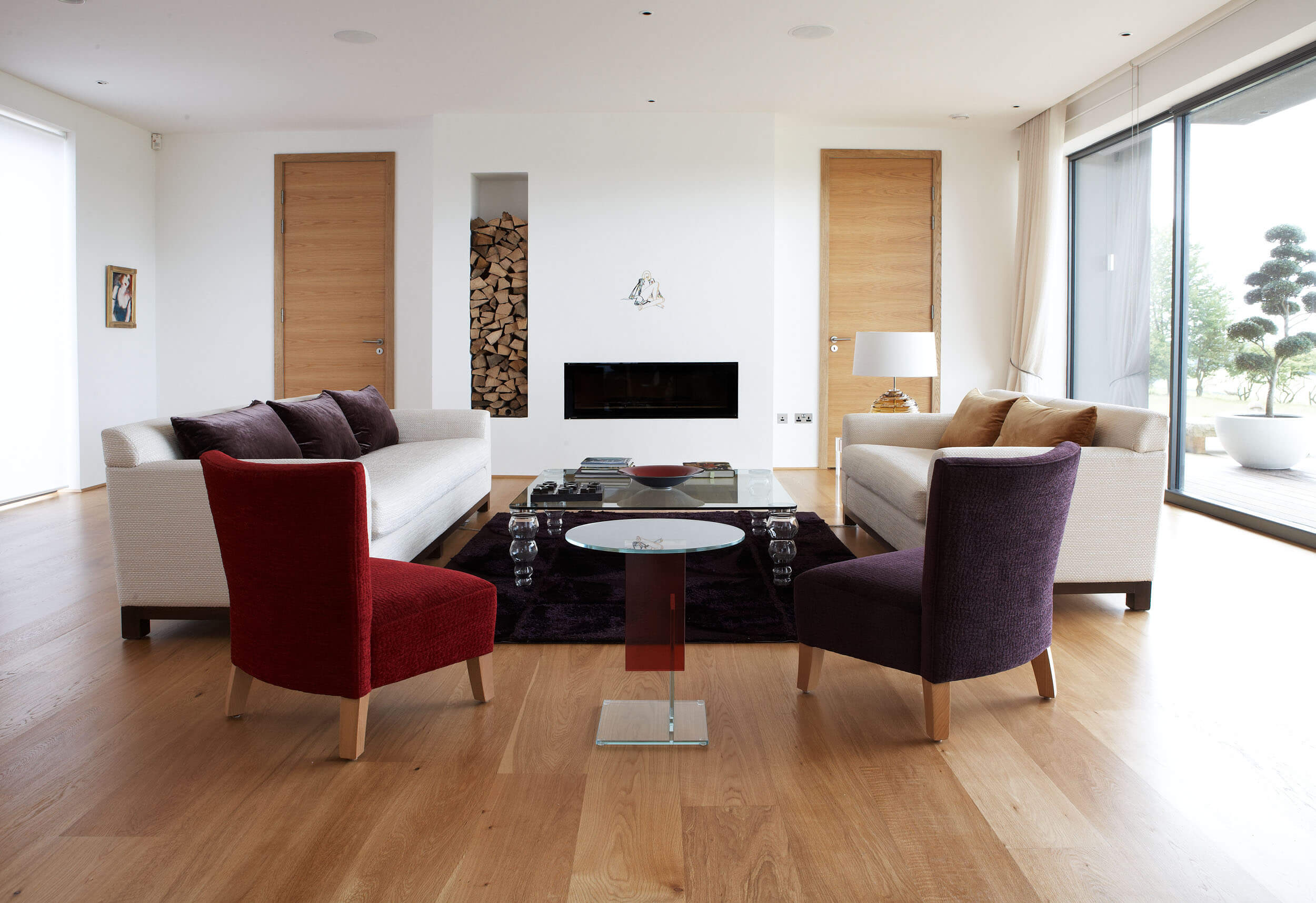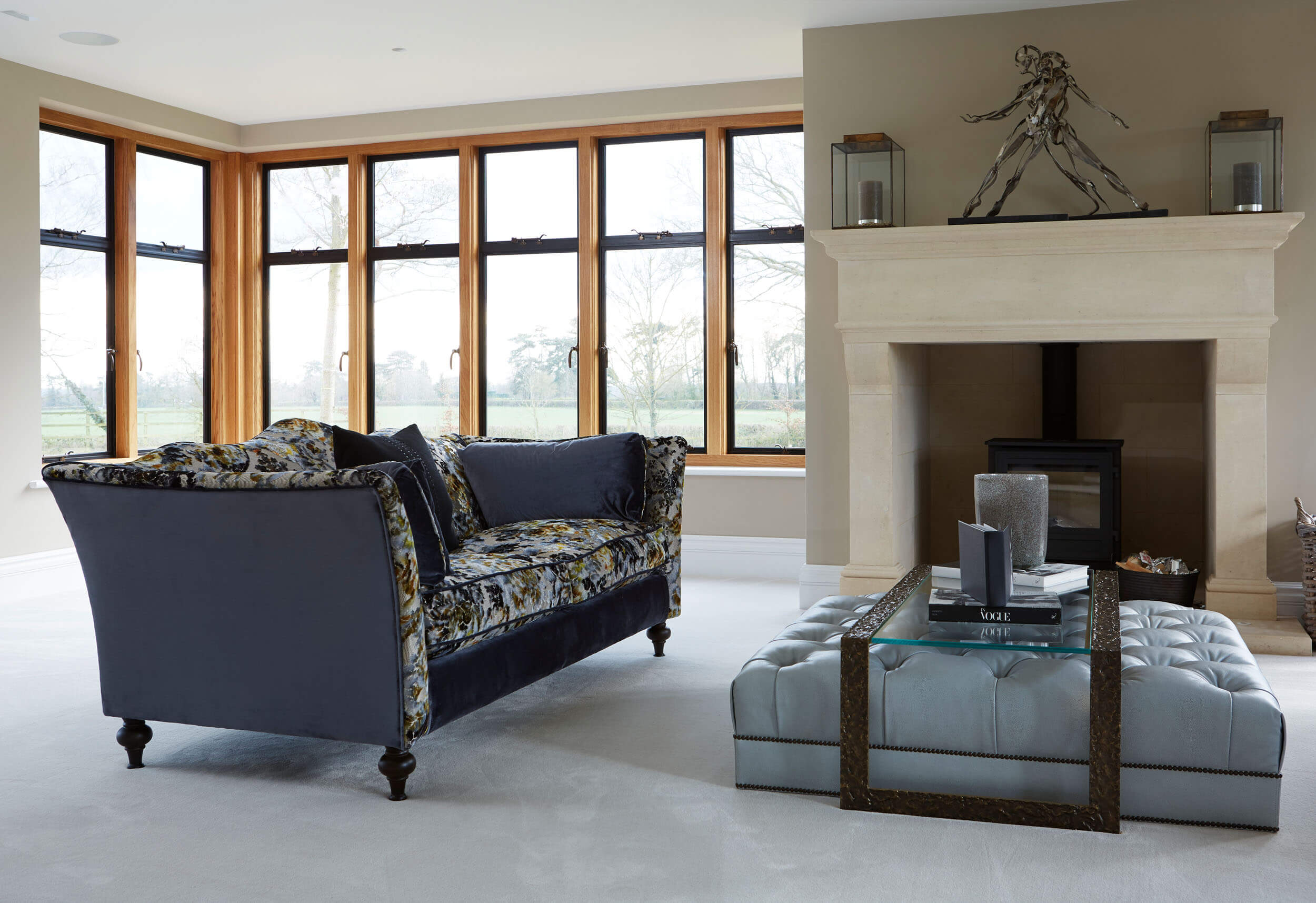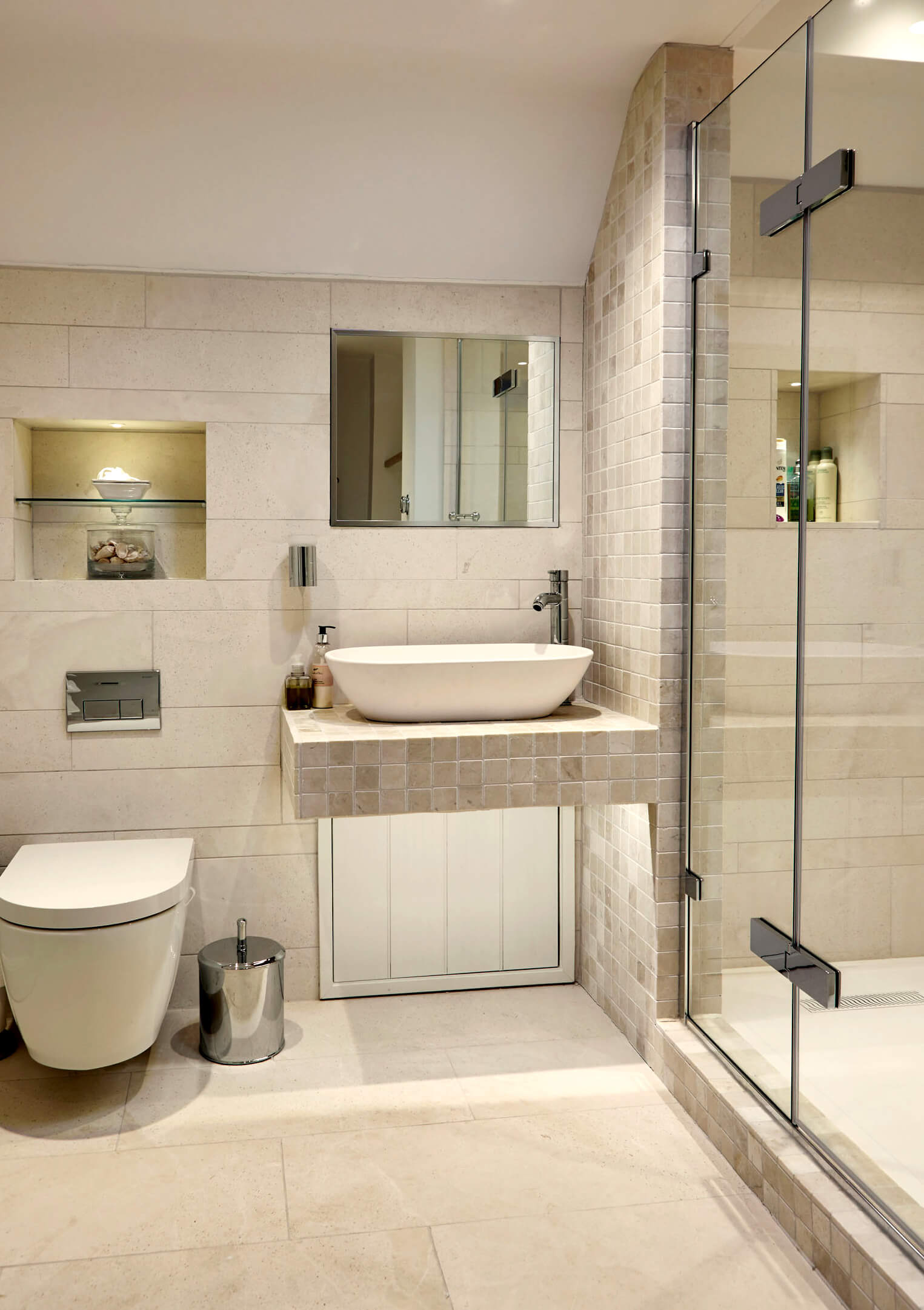Kitchen
In a small kitchen, it may seem inevitable that some items and utensils will be kept on countertops. However, there are ways to work around this and keep your kitchen neat and tidy, in keeping with a minimalist design.
When it comes to crockery and cooking utensils, aim for quality over quantity. A durable set of kitchen knives and saucepans will maintain their quality for longer, meaning you need fewer items.
You shouldn’t need more than one or two baking trays and hoarding five different gin glasses isn’t improving your kitchen. The same goes for collections of fancy blenders, mixers, and bread makers – ask yourself, how regularly do you use them? If it’s not often, they can be removed – at least from the kitchen and stored away elsewhere in case you need them in the future.
Use overhead storage where possible, including cupboards and hanging racks. A simple rack or shelf is ideal for storing saucepans without cluttering countertops at eye level.
Installing pop-up plug entries around the kitchen removes the need for exposed sockets and visible wires. These can be hidden away when not in use, giving you a tidier kitchen.
Also, consider installing ‘invisible’ appliances that are built-in behind cupboard doors, giving you a sleeker kitchen design.





